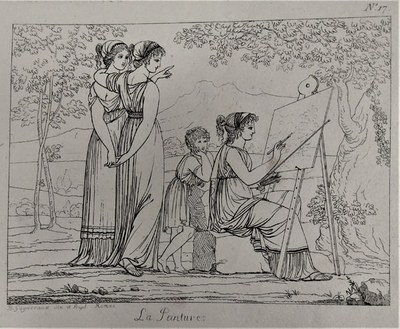Tomas Macsotay // Outline and the Visionary Paradigm in late Enlightenment Rome
For the last two decades of the eighteenth century, the Outline "revolution" swept across the Roman art world, affecting European neoclassical and romantic painting, sculpture, architecture and design alike. The state of research has however left an important void: we do not yet have a historical survey on artistic and cultural practices of the neoclassical Outline as such. This proposal seeks to establish outline drawing´s specific productive and receptive implications, as well as the local and cosmopolitan historical setting that was the backdrop to it. Finally, it seeks to help link that novel visual language with a set of concerns in late-Enlightenment thought.
Having published widely on the topic of Rome’s transnational communities of sculpture-making in light of the city’s cosmopolitan sociability, transient artistic settlers, and politically fragile and volatile climate, the applicant seeks to complete a monograph that engages and questions a current understanding of this epochal moment in art history.
The Humboldt Foundation Grant, which unfolds at the Zentralinstitut für Kunstgeschichte in München, will enable the applicant to access library and archival funds, as well as establish collaborations with Aufklärungsforscher and sculpture specialists. At the heart of the visit will be primary and secondary sources in German and relating to the German-speaking world of art, letters and learning in the decades around 1800, with a special focus on travellers to Italy. The study of these sources must further our knowledge on the neoclassical Outline on three levels:
1. To bring some order into current inconsistencies (chronological as well as historiographical) that have so far supported accounts of the rise of outline drawing.
2. To introduce the voices of antiquarians and dilettanti befriending artists in Rome, collecting and writing on art and literature.
3. To reconstruct more fully and more systematically the determining cultural and emotional climates in which specific Enlightenment debates and ideas became a foil for artistic experimentation in Rome.
[Caption: Gagneraux, "La Peinture" (1791)]
